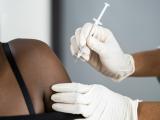Jul 29, 2011
Study: Oseltamivir use drives resistance in immunocompromised patients
The selective pressure caused by the use of oseltamivir in pandemic H1N1 flu patients probably explains the sporadic instances of resistance to the drug, especially in immunocompromised patients, according to British researchers who conducted a case-control study. The authors examined data on patients who were hospitalized with 2009 H1N1 in England and Scotland between Jan 4, 2009, and Apr 30, 2010, according to their online report in Emerging Infectious Diseases (EID). They identified 34 patients with oseltamivir-resistant infections (case-patients) and 346 with oseltamivir-sensitive strains (controls). Of 28 case-patients with available information, 21 were immunocompromised, and most case-patients had received antiviral drugs before a sample was obtained. After adjustment for confounders, case-patients were significantly more likely than controls to be immunocompromised and were at higher risk for respiratory complications. The authors say monitoring of antiviral resistance is strongly recommended in immunocompromisted patients.
EID report
Sick food handlers suspected in European norovirus outbreaks
The most recent issue of Eurosurveillance described two norovirus outbreaks that occurred earlier this year, one in France that sickened 147 in a French military unit and was linked to an infected cook, and one from an undetermined source that sickened 56 people who attended a meeting at an Oslo hotel. The outbreak in France occurred in April and was linked to a canteen where a parachuting unit had eaten. Health officials who conducted the epidemiologic investigation suspected pasta or raw vegetables as the source. A nondiarrheal stool sample from a cook who had been sick 1 week earlier was positive for norovirus genogroup 1, and samples taken from raw carrots, salad, and tomato samples also yielded the pathogen. The authors noted that an acute gastroenteritis outbreak occurred at a nursing home in the same area where the same cook had worked a few days earlier, but no samples were taken from sick patients and the outbreak wasn't reported to health authorities. The Norwegian outbreak occurred in late January at an upscale hotel where 900 people from all over the country attended a meeting. Health officials launched an investigation after 30 meeting attendees got sick. They asked meeting participants to complete an internet-based questionnaire and for sick patients to submit stool samples. Food safety authorities inspected the hotel's kitchen. Norovirus was found in 3 of 4 patients who visited doctors but no genotyping was performed. Authorities did not determine a specific food suspect but did find several problems in the hotel's kitchen such as improper washing routines and control of food temperatures. They concluded that the outbreak was probably caused by contaminated food from handlers, kitchen staff, waiters, or meeting participants.
Jul 28 Euro Surveill report on French military unit outbreak
Jul 28 Euro Surveill report on Oslo hotel outbreak
Experts call for more research on Ebola prevention, diagnostics
While experimental vaccines against the deadly Ebola virus are showing considerable promise, there is a need for more research on prevention and diagnostics, according to experts quoted in a news report in The Lancet. Dr. Heinz Feldmann of the US National Institutes of Health said that despite recent progress, licensed vaccines and drugs for Ebola are "years away," and in the meantime prevention deserves greater emphasis. One major challenge is to identify the virus's natural reservoir—suspected to be bats—and trace its transmission pathway to humans, he said. Esther Sterk of Medecins Sans Frontieres commented, "It's a pity that so much research has the biological weapon aspect in mind rather than helping the affected population." She said diagnosis of Ebola takes too long—up to 10 days in some cases—because of the lack of a biochemical and hematgologic test that's usable in the field.
Jul 30 Lancet report























